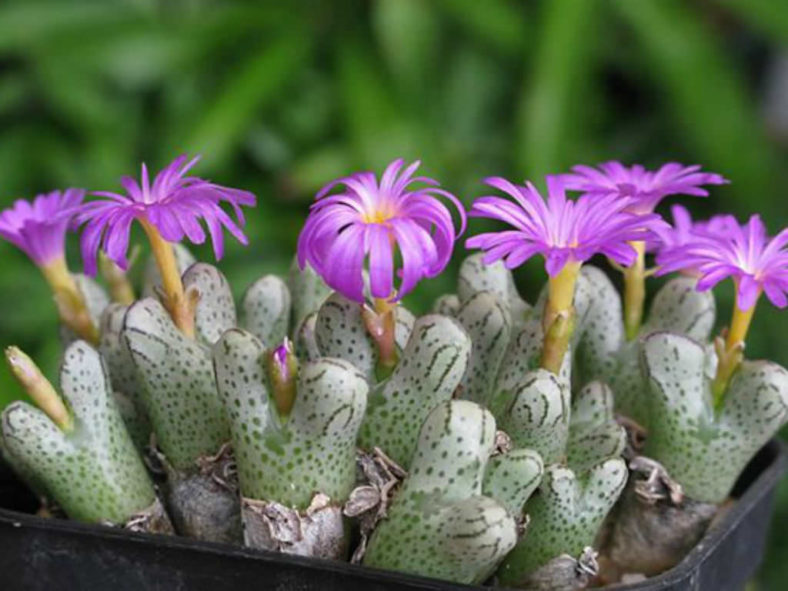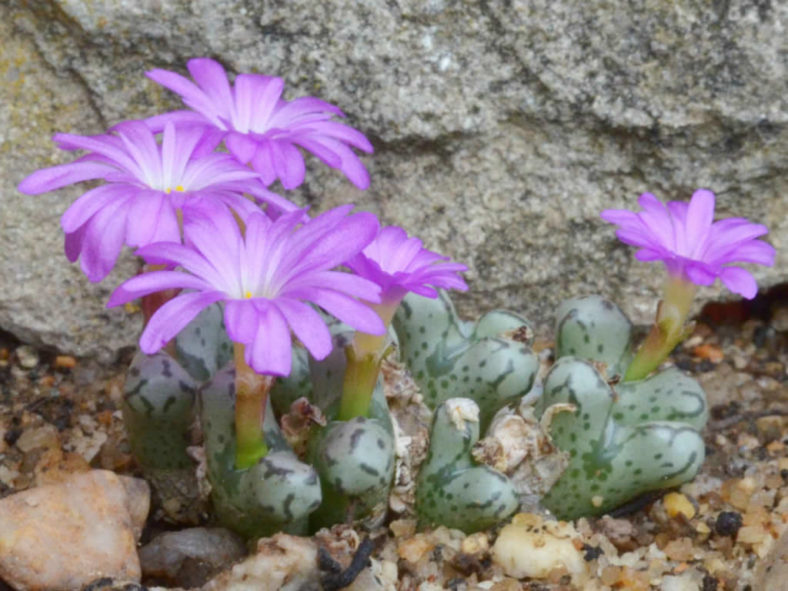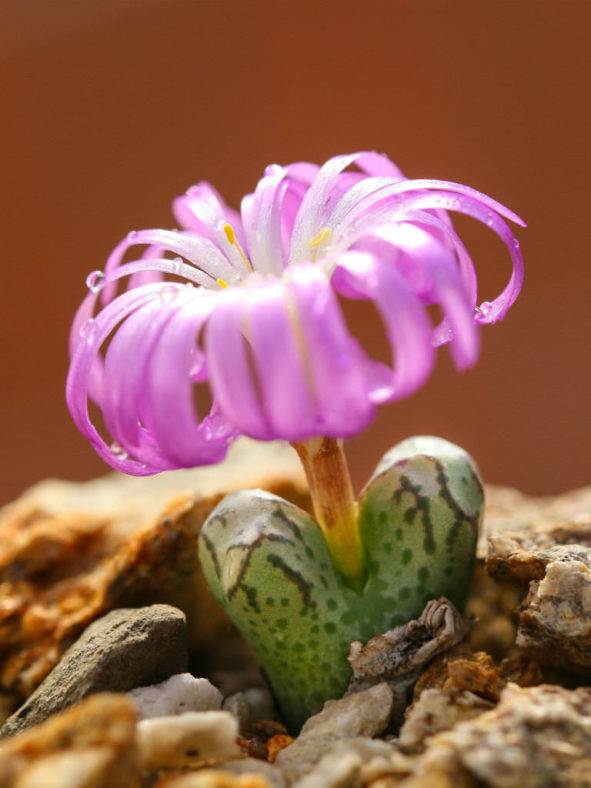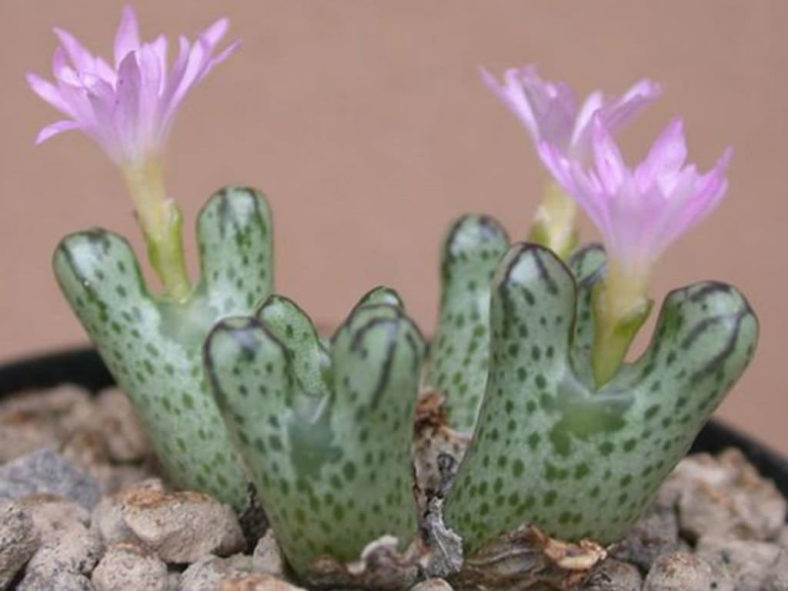Scientific Name
Conophytum turrigerum (N.E.Br.) N.E.Br.
Synonym(s)
Derenbergia turrigera, Mesembryanthemum turrigerum
Scientific Classification
Family: Aizoaceae
Subfamily: Ruschioideae
Tribe: Ruschieae
Genus: Conophytum
Etymology
The specific epithet "turrigerum" (pronounced "tur-IG-er-um") means "having turrets, turreted, turret-crowned" and refers to the bilobed apex of the boides of this species.
Origin
Conophytum turrigerum is native to South Africa. It grows on granite outcrops from Darling to Paarl in the Western Cape.
Description
Conophytum turrigerum is a dwarf succulent that forms clumps of whitish, club-shaped bodies that are bilobed at the apex and usually spotted and lined. The bodies can grow up to 1 inch (2.5 cm) tall.
The diurnal flowers are lilac, pale pink, or white and usually appear in fall or rarely in summer. The fruits are 3- to 5-locular capsules.

How to Grow and Care
Hardiness: USDA hardiness zones 10a to 11b: from 30°F (-1.1°C) to 50°F (10°C).
Most Conophytums need bright light but do not like too much intense sunlight. To avoid sunburn, place them in a position that receives a few hours of full sun during cooler parts of the day.
These plants thrive best in a porous, well-draining growing medium. You can use commercial succulent soil specially designed for succulents or make your own mix.
When Conophytums go dormant in the spring, they require little or no water. When plants begin growing in the fall, it is safe to water deeply, allowing the soil to dry before watering again.
Conophytums are light feeders and do not need fertilizer if repotted every two years. However, they should be fed at the beginning of the growth period and just before flowering.
These succulents will benefit from repotting. Depending on the pot's size and growth rate, they typically need to be repotted every 2 to 4 years. The best time to repot a Conophytum is at the beginning of the growing season.
Conophytums are easily propagated by division. They can also be grown from seeds.
Learn more at How to Grow and Care for Conophytum.
Links
- Back to genus Conophytum
- Succupedia: Browse succulents by Scientific Name, Common Name, Genus, Family, USDA Hardiness Zone, Origin, or cacti by Genus
Photo Gallery
Click on a photo to see a larger version.


